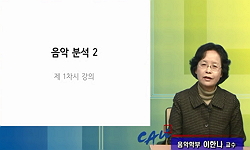The term rhapsody originally refers to the song of the ancient Greek rhapsodist, or professional reciter and chanter of epic poetry. It was applied to Instrumental music without regular form early in the nineteenth century. Although rhapsody was not c...
http://chineseinput.net/에서 pinyin(병음)방식으로 중국어를 변환할 수 있습니다.
변환된 중국어를 복사하여 사용하시면 됩니다.
- 中文 을 입력하시려면 zhongwen을 입력하시고 space를누르시면됩니다.
- 北京 을 입력하시려면 beijing을 입력하시고 space를 누르시면 됩니다.

브람스의 피아노 랩소디 Op.79와 Op. 119, No.4의 분석연구 = The Formal Structure of Brahms’ Three Rhapsodies for Piano, Op.79 and Op.119, No.4
한글로보기https://www.riss.kr/link?id=A106869817
- 저자
- 발행기관
- 학술지명
- 권호사항
-
발행연도
2003
-
작성언어
-
-
주제어
Brahms ; Rhapsody ; Music Analysis ; Style Analysis ; Piano Pieces ; Sonata Form ; Rondo Form ; 브람스 ; 랩소디 ; 음악 분석 ; 양식 분석 ; 소나타 형식 ; 론도 형식
-
KDC
600
-
등재정보
KCI등재
-
자료형태
학술저널
-
수록면
37-49(13쪽)
- 제공처
- 소장기관
-
0
상세조회 -
0
다운로드
부가정보
다국어 초록 (Multilingual Abstract)
In 1869, Brahms wrote Rhapsodie, Op.53, for contralto, men's chorus and orchestra, setting a portion of Goethe's poem Harzreise in Winter. Ten years later, he composed two piano pieces under the same title, Two Rhapsodies, Op.79 in 1879. Another rhapsody for piano was written in 1892 as one of the four piano pieces in Piano Pieces, Op.ll9.
Brahms is generally regarded as one of the conservative composers of the Romantic period, and his later piano works still show many characteristics of the Classical style. Although it is believed that Brahms applied the term rhapsody somewhat loosely for description of works, the formal structure of his three Rhapsodies for piano could fall into some kind of ternary design. The formal design of each piece is discussed in this paper in order to find out which Classical form was used as a model for Brahms’s piano Rhapsodies.
The term rhapsody originally refers to the song of the ancient Greek rhapsodist, or professional reciter and chanter of epic poetry. It was applied to Instrumental music without regular form early in the nineteenth century. Although rhapsody was not confined to any particular medium, Romantic composers wrote rhapsodies mostly for piano or orchestra.
In 1869, Brahms wrote Rhapsodie, Op.53, for contralto, men's chorus and orchestra, setting a portion of Goethe's poem Harzreise in Winter. Ten years later, he composed two piano pieces under the same title, Two Rhapsodies, Op.79 in 1879. Another rhapsody for piano was written in 1892 as one of the four piano pieces in Piano Pieces, Op.ll9.
Brahms is generally regarded as one of the conservative composers of the Romantic period, and his later piano works still show many characteristics of the Classical style. Although it is believed that Brahms applied the term rhapsody somewhat loosely for description of works, the formal structure of his three Rhapsodies for piano could fall into some kind of ternary design. The formal design of each piece is discussed in this paper in order to find out which Classical form was used as a model for Brahms’s piano Rhapsodies.
동일학술지(권/호) 다른 논문
-
20세기초 음악에서의 새로운 조성관계 -바르톡, 스크리 아빈의 음악을 중심으로-
- 한양대학교 음악연구소
- 김종신 ( Jongshin Kim )
- 2003
- KCI등재
-
- 한양대학교 음악연구소
- 이경희 ( Kyunghee Lee )
- 2003
- KCI등재
-
- 한양대학교 음악연구소
- 강순미 ( Soonmee Kahng )
- 2003
- KCI등재
-
- 한양대학교 음악연구소
- 이용식 ( Yong-shik Lee )
- 2003
- KCI등재




 KISS
KISS







